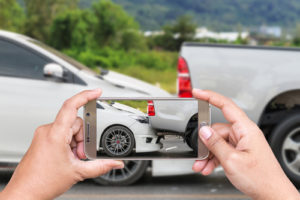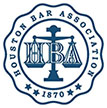Importance Of Taking Photos After An Accident

Being involved in a car accident is a shocking experience. In the immediate aftermath, you may be so shaken that you feel as though you can’t think straight. While this is normal, try to take a few deep breaths and steady yourself. What comes next is very important.
By acting calmly and starting the process of collecting evidence immediately, you can improve your chances of recovering the compensation you deserve. Consider the following about the importance of taking photos after a car crash, as well as important things to photograph.
Why You Need to Take Photos
Today, nearly everyone has a smartphone on them at all times, which means that taking photos is not only easy, but also something that most people are doing regularly. When you’ve been in a car accident, you need to put this technology – and your photography skills – to the test.
Taking photos is very important because photos offer insight and evidence that is practically indisputable. For example, when you submit a photo of your airbags deployed along with a photo of your broken nose and facial bruising, the insurance company you’re submitting your claim to will have a hard time denying that either occurred.
In other words, photos can be stronger and more compelling than your word alone. If you have photos of your injuries, as well as photos that offer clues as to how the accident and your injuries occurred, you’ll have a stronger claim.
What to Take Photos of After an Accident
It’s best to take photos of anything that you can think of that could be relevant to your car accident claim. If possible, it’s also great to take photos right at the scene of the accident while you are waiting for police officers to arrive.
You don’t have to be a pro photographer. All you need is a smartphone and a commitment to capturing as much as possible. Here are some things you definitely will want to take photos of:
- Property damage. If you’ve been in a car accident, there is a very strong chance that your vehicle has suffered some degree of property damage, both to the exterior of your vehicle (dents, broken lights, crushed and crumpled areas, etc.) and to the interior (deployed airbags, broken glass, torn or crumpled seats, etc.). If you plan to file a property damage claim with the insurer, having proof that the property damage occurred is a must. The damage can also provide clues about how the crash happened and who was at fault.
- Vehicle positioning. Not only do you want to take pictures of any damage to your vehicle, but you also want to photograph the position of the vehicles involved in the accident at the time of the crash. This can also be a vital clue into how the accident happened and who may be to blame for damages.
- Debris and skid marks. Taking photos of debris is a great way to offer more proof of how an accident happened. Taking pictures of skid marks, as well as any other physical evidence that does not involve the vehicles themselves, is yet one more clue into causation. For example, evidence of skid marks can lead to a valid argument that one driver braked firmly, leading to the skid marks. The length of the skid marks could indicate whether the vehicle was speeding, for example. This may help accident reconstruction experts figure out what happened.
- Your injuries. Taking photos of your injuries (both immediately after you’re hurt and in the weeks and months following the accident) can be very valuable. When you file a car accident injury claim, you will have to prove the extent of harm that you suffered. Photos, especially when combined with doctor’s notes and medical reports, can be very compelling.
- Traffic signs. You may be wondering, “Why would photos of traffic signs be valuable in a car accident claim?” The answer is that traffic signs, like skid marks, can offer information about who may have caused a crash and whose negligence led to the accident. For example, just knowing that one vehicle T-boned another doesn’t provide a lot of information about how the accident happened. Knowing that the driver of one of the vehicles faced a yield sign right before entering the intersection could be a valuable nugget of information.
- Weather and lighting conditions. Take a few pictures of the lighting and weather on the day of your crash. Was it dark outside when the crashed occurred? Was it raining, and therefore visibility was reduced? Knowing what Mother Nature was doing at the time of an accident can help investigators draw a conclusion about causation.
- Officers’ badge numbers. It’s important that you record the names and badge numbers of any officers who respond to your accident. Snapping a quick photo of this information is easy. As you pursue your claim, you may need to contact officers to ask a question, request a copy of your accident report, or even get formal testimony.
- Witnesses. Finally, just like police officers, witnesses can be very valuable in a car accident claim, as a witness can provide testimony about what they saw and who, based on what they witnessed, they believe to be to blame. You may be feeling frazzled at the time of the accident, and may quickly forget a witness’s name. Taking a picture of the witness and their contact information can help jog your memory later.
How Our Experienced Houston Car Accident Lawyer Can Help
Unfortunately, if you have been seriously injured in a car accident, it may be difficult for you to take photos of all of the things listed above. When you call our Houston car accident lawyer at the office of The Seerden Law Firm, PLLC, our lawyer can manage the investigative side of your claim on your behalf, doing everything from taking photos of the accident scene, to tracking down eyewitnesses, to requesting copies of police reports and more.
If you have been harmed in a car accident, it’s important to remember that you are not alone. To schedule your free consultation with The Seerden law Firm, PLLC, please call our law office today or send us a message online.





